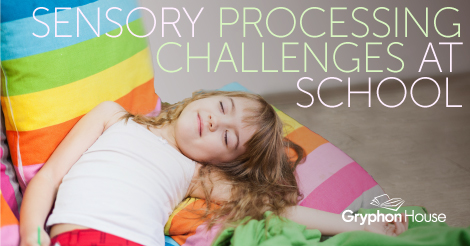
Children learn early on how to react to their environment using their natural response system: their senses. However, many children have trouble relying on their senses, as they have sensory processing disorder. Sometimes found within children with learning disorders such as ADHD, sensory processing disorder is most common among children with autism.
Children with autism see, hear, and feel just like other children, but they cannot take the information they receive through their senses and translate it into a meaningful response. Many teachers are unsure of how to support or even identify children with sensory processing disorder in their classrooms.
Teaching Young Children With Autism Spectrum Disorder, by Dr. Clarissa Willis, is a wonderful educator resource that provides valuable knowledge and strategies for identifying students with special needs and how to accommodate them so they receive the best learning experience possible. Willis offers up various suggestions from occupational therapy options to how to make your lesson plans more flexible and inclusive.
Here are a few pieces of advice from Dr. Willis on how to identify and support children with sensory process disorder.
How Will I Know If a Child Has a Sensory Integration Disorder?
You will know it by observation, through information you receive from others, and by educating yourself about ways to recognize it. A few of the most common red flags that a child has a sensory integration disorder include unusual responses to touch, adverse responses to moving and being moved, a lack of tolerance for noise and light, and an unwillingness to taste or try new foods.
What Can I Do to Help a Child With Sensory Integration Disorder?
Children with sensory integration disorders sometime respond well to items that enable them to calm down so that they can better organize all the input they receive through their senses. Some examples of such calming objects include (calmers) and organizers include: things to chew on (chewies), toys that vibrate, weighted vests, soft things that they can squeeze, beanbag chairs or therapy balls to sit on, and stretchy material such as latex that they can use to make a body cocoon.
The most common calmers and organizer include:
Chewies: For a child with issues relating to touch, chewing on something soft can be very relaxing. Chewies can be purchased from companies that specialize in sensory integration materials.
Vibrating toys: Vibration can be very calming to the proprioceptive system. Examples of vibrating items might include pens, toothbrushes, toys, pillows, and cell phones.
Weighted Objects: A weighted object might be used to help a child who has difficulty with balance or with his proprioceptive system. A weighted vest, backpack, fanny pack, or blanket can help the child feel more grounded and less concerned about his sense of movement. Deep pressure helps children calm down.
Author(s)Clarissa Willis, PhD
Anna Wilmoth
Marketer. Publisher. Reporter. Educator. Mother. Runner. Explorer. Anna served as director of marketing for Gryphon House from Oct 2014 - May 2017.